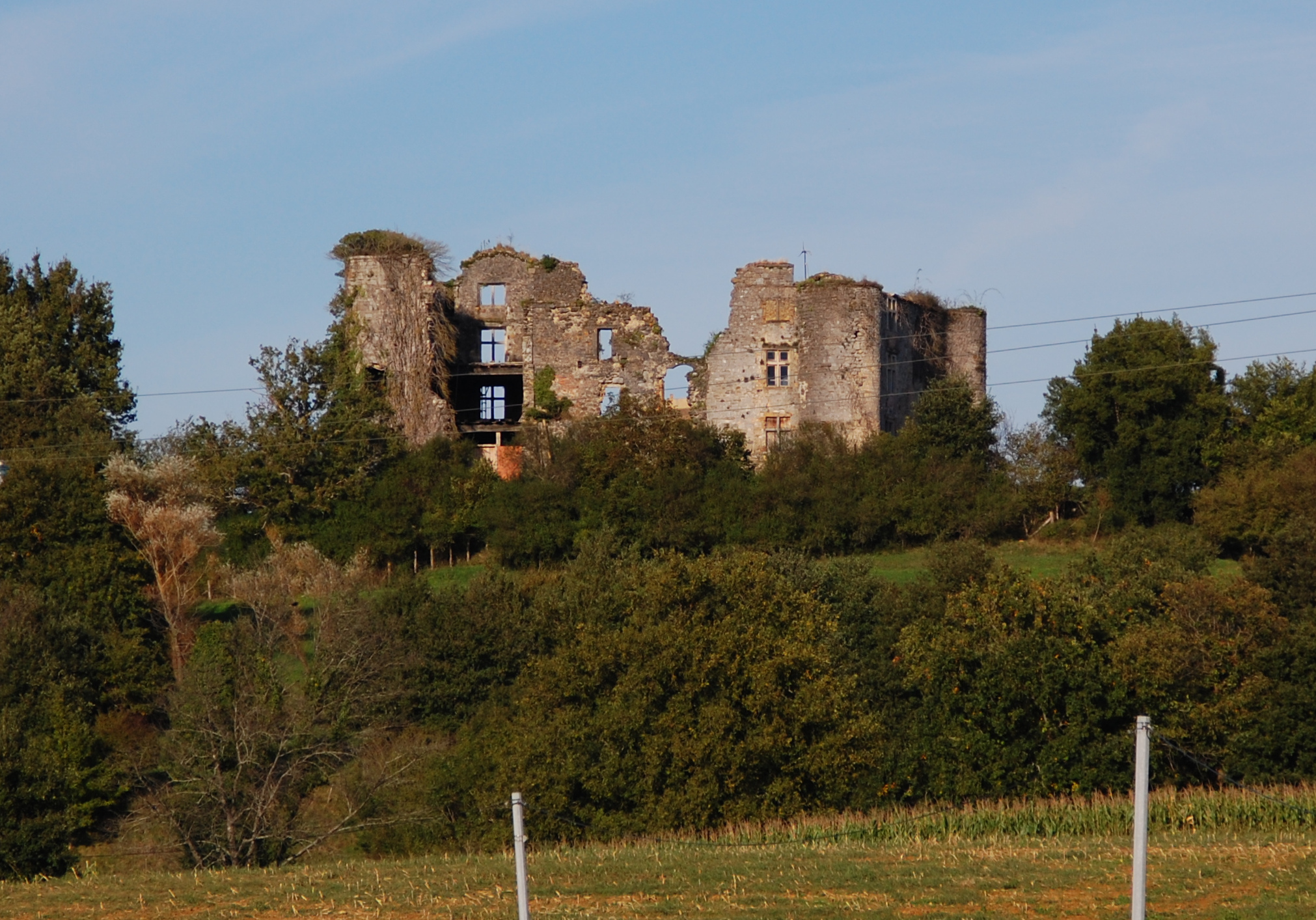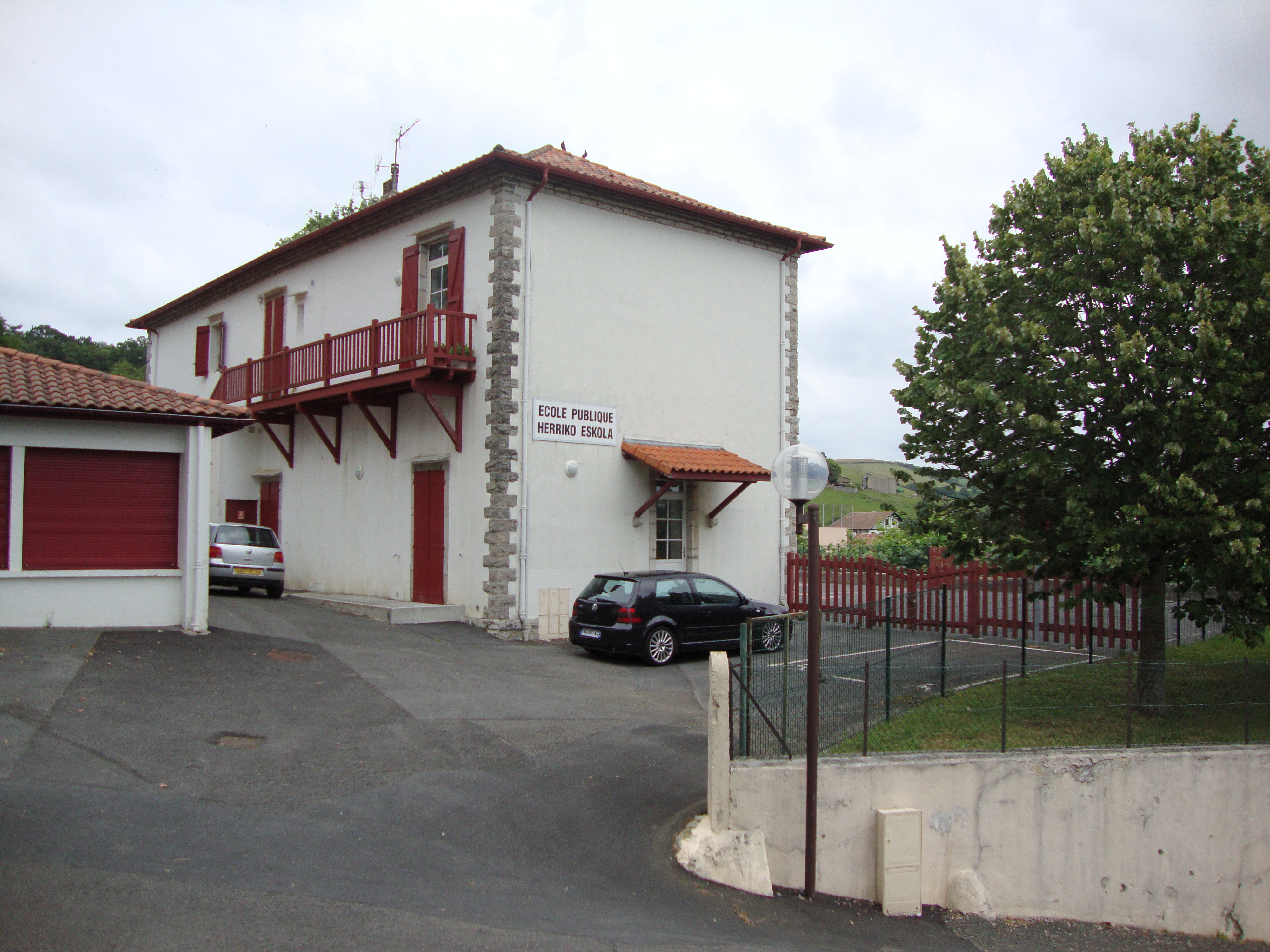Ayherre (Pyr-Atl, Fr) église.JPG on:
[Wikipedia]
[Google]
[Amazon]
Ayherre ()AIHERRE
Auñamendi Eusko Entziklopedia is a commune in the Pyrénées-Atlantiques
Auñamendi Eusko Entziklopedia is a commune in the Pyrénées-Atlantiques
department
Department may refer to:
* Departmentalization, division of a larger organization into parts with specific responsibility
Government and military
*Department (administrative division), a geographical and administrative division within a country, ...
in the Nouvelle-Aquitaine region of south-western France.
The inhabitants of the commune are known as ''Aihertars''.
Geography
Ayherre is located in the Arberoue Valley in the former province of Lower Navarre some 23 km east by south-east ofBayonne
Bayonne (; eu, Baiona ; oc, label= Gascon, Baiona ; es, Bayona) is a city in Southwestern France near the Spanish border. It is a commune and one of two subprefectures in the Pyrénées-Atlantiques department, in the Nouvelle-Aquitaine re ...
and immediately east of Hasparren. Access to the commune is by the D10 road from Hasparren which passes through the west of the commune and continues north to La Bastide-Clairence
La Bastide-Clairence (; ) is a commune in the Pyrénées-Atlantiques department in the Nouvelle-Aquitaine region of south-western France.
The inhabitants of the commune are known as ''Bastidots'' or ''Bastidotes''.
The village is a member of the ...
. The D251 branches east off the D10 in the commune and goes to the village then continues east to Isturits. The D314 goes south-west from the village to Bonloc
Bonloc (; eu, Lekuine)LEKUINE
Saint-Esteben passes through the south of the commune. The commune is mainly farmland with scattered forests.Google Maps
/ref> The commune is located in the drainage basin of the
(Eu icon) or ''Aiherre''. According to Jean-Baptiste Orpustan, the name comes from the basque ''ailherr'' ("incline"), giving the meaning "place on a slope". The following table details the origins of the commune name and other names in the commune. ***In the Middle Ages Bildarraitz was an independent area without a church but with its own council, and a half-dozen homes were ennobled in 1435. The name may be the joining of ''bil-'', meaning "set" or "a round place", and ''araitz'', meaning "blackthorn", "prickly", or "briar". Sources: *Orpustan: Jean-Baptiste Orpustan, ''New Basque Toponymy''Jean-Baptiste Orpustan, ''New Basque Toponymy'', Presses universitaires de Bordeaux, 2006, * Raymond:''
''Topographic Dictionary of the Department of Basses-Pyrenees''
1863, on the page numbers indicated in the table. ''Topographic Dictionary of the Department of Basses-Pyrenees''
Paul Raymond, Imprimerie nationale, 1863, Digitised from Lyon Public Library 15 June 2011 *Cassini:
/ref> Origins: *Camara: Titles of Camara of ComptosTitles published by don José Yanguas y Miranda - ''Diccionario de Antiguedades del reino de Navarra'', 1840, Pamplona *Pamplona: Titles of PamplonaTitles published by don José Yanguas y Miranda ) *Collations: Collations of the
 List of successive mayors
List of successive mayors
 Economic activity in the commune is mainly agricultural. The commune is part of the Appellation d'origine contrôlée (AOC) zone of
Economic activity in the commune is mainly agricultural. The commune is part of the Appellation d'origine contrôlée (AOC) zone of

 The Parish Church of Saint Pierre (17th century) is registered as an historical monument.Ministry of Culture, Mérimée
The Parish Church of Saint Pierre (17th century) is registered as an historical monument.Ministry of Culture, Mérimée
 The commune has two primary schools: one in the town and one private school of the Immaculate Conception.
The commune has two primary schools: one in the town and one private school of the Immaculate Conception.
Ayherre official website
{{authority control Communes of Pyrénées-Atlantiques Lower Navarre
/ref> The commune is located in the drainage basin of the
Adour
The Adour (; eu, Aturri; oc, Ador) is a river in southwestern France. It rises in High-Bigorre (Pyrenees), in the commune of Aspin-Aure, and flows into the Atlantic Ocean (Bay of Biscay) near Bayonne. It is long, of which the uppermost ca. i ...
with a dense network of streams covering the commune, mostly flowing north-westwards, and including the Joyeuse, which forms part of the western border of the commune. The Arbéroue rises in the south of the commune and flows north gathering many tributaries before joining the Lihoury to the north.

Places and hamlets
* Abarratia * Ahounsbiscardeguy * Aguerréa (3 places) * Aguerréko Borda * Ainguéroutéguia * Andérétéguia * Apairi or Apahiri, from ''Apʰara-hiri'' * Apézénéa * Apeztéguia * Archidukénia * Arduarria * Arkhia * Arramendy * Arraydua * Auchotéa * Ayherregaraya * Ballade Etcheberry * Barné Uhartia * Béhibidia * Belzunce * Berhéta * Berhétako Borda * Berhoa * Bicaldéguy * Bichartéa * Bidartéa * Bidegain Etchetoa * Bidegainia * Bildaraitz or Bildarraitz * Bordalanda * Buztingorria * Celhaya * Chapitalborda * Chapitalia (mill) * Chedarria * Chelhaya * Chocoa * Courtaut * Currioléko Borda * Curutzaldéa * Egyptoa * Erketa * Erregnétéa * Errékahoua * Errékartéa * Espertatea * Estekatea * Etchartéa * Etchébarnéko Borda * Etchébazterréa * Etchébéhéréa * Etchébéhéreko Borda * Etchéberria (2 places) * Etcheberriko Borda * Etchéberstia * Etchéchouria * Etchégaraya * Etchégoïnéa * Etchénika * Etchenikako Borda * Etchéparéa * Etchétipia * Etchetoa * Eyhéra * Ezpildéa * Ferminéko Borda * Fermirénéa * Gandéramendia * Gandéramendiko Borda * Garralda * Gauhetchia * Granya * Granyagaraya * Haranbilléta * Haranburua * Haranéa * Harréguia * Harriéta * Harriétako Borda * Hastoya * Hégoa * Hergaitz * Hiriartéa * Ichuria * Idiartéa * Idigoïnia * Ilharindéguia * Ipoutsaguerria * Irachiloa * Irazabalia * Iriart Urrutia * Iribarnéa * Iriberria * Issouribeherea * Jauberria (2 places) * Jaungaztenia * Jelossia * Kintalénéa * Kitendéa * Larrégaïnia * Larzabaléa * Leichorrénéa * Létouatéguia * Lohichundéa * Londaits * Londaitsbehere * Londaïtzberria * Londaitzekoborda * Lukua * Lur Berry * Manéchéka Borda * Manéchénéa * Mayartéguia * Mendia * Mendiberria * Mendiburua * Mendigorria * Mendilarréa * Menta * Mentaberria * Mentachiloa * Mignotéguia * Négutéa * Notariaénia * Ourriola * Oyhana * Oyharartéa * Oyharitzéa * Oyharitséko Borda * Patindeya * Peña * Petchitea * Pipitea * Pompochénéa * Sallaberryborda * Sarcabaleko Borda * Sarhigaïnéa * Tuturrutéguia * Uhaldéa * Urgorria * Urquéta * Zabaloa * Zabalza * Zaliotéguia * ZokoaToponymy
The commune name in basque is ''Aiherra''Euskaltzaindia - Academy of the Basque language(Eu icon) or ''Aiherre''. According to Jean-Baptiste Orpustan, the name comes from the basque ''ailherr'' ("incline"), giving the meaning "place on a slope". The following table details the origins of the commune name and other names in the commune. ***In the Middle Ages Bildarraitz was an independent area without a church but with its own council, and a half-dozen homes were ennobled in 1435. The name may be the joining of ''bil-'', meaning "set" or "a round place", and ''araitz'', meaning "blackthorn", "prickly", or "briar". Sources: *Orpustan: Jean-Baptiste Orpustan, ''New Basque Toponymy''Jean-Baptiste Orpustan, ''New Basque Toponymy'', Presses universitaires de Bordeaux, 2006, * Raymond:''
''Topographic Dictionary of the Department of Basses-Pyrenees''
1863, on the page numbers indicated in the table. ''Topographic Dictionary of the Department of Basses-Pyrenees''
Paul Raymond, Imprimerie nationale, 1863, Digitised from Lyon Public Library 15 June 2011 *Cassini:
Cassini Map
The Cassini Map or Academy's Map is the first topographic and geometric map made of the Kingdom of France as a whole. It was compiled by the Cassini family, mainly César-François Cassini (Cassini III) and his son Jean-Dominique Cassini (Ca ...
from 1750Cassini Map 1750 – Ayherre/ref> Origins: *Camara: Titles of Camara of ComptosTitles published by don José Yanguas y Miranda - ''Diccionario de Antiguedades del reino de Navarra'', 1840, Pamplona *Pamplona: Titles of PamplonaTitles published by don José Yanguas y Miranda ) *Collations: Collations of the
Diocese of Bayonne
The Diocese of Bayonne, Lescar, and Oloron, commonly Diocese of Bayonne, (Latin: ''Dioecesis Baionensis, Lascurrensis et Oloronensis''; French language, French: ''Diocèse de Bayonne, Lescar et Oloron''; Basque language, Basque: ''Baionako, Leskar ...
Manuscripts from the 17th and 18th centuries in the Departmental Archives of Pyrénées-Atlantiques
*Biscay: Martin Biscay
*Duchesne: Duchesne collection volume CXIVDuchesne Collection, volumes 99 to 114, containing the papers of Oihenart, former Imperial Librarian - Bibliothèque nationale de France
The Bibliothèque nationale de France (, 'National Library of France'; BnF) is the national library of France, located in Paris on two main sites known respectively as ''Richelieu'' and ''François-Mitterrand''. It is the national repository ...
History
On 18 March 1450,Labourd
Labourd ( eu, Lapurdi; la, Lapurdum; Gascon: ''Labord'') is a former French province and part of the present-day Pyrénées Atlantiques ''département''. It is one of the traditional Basque provinces, and identified as one of the territorial c ...
returned to the French crown after the signing of a peace treaty at the Château of Belzunce in Ayherre which marked the end of English influence in the region. On that the representatives of Labourd made their submission and, upon payment of 2,000 gold écus secured by the retention of 10 hostages, retained their privileges.
Heraldry
Administration
Inter-communality
The commune is part of six inter-communal structures: * the Communauté d'agglomération du Pays Basque * the AEP association of Arberoue * the sanitation association of Adour-Ursula * the energy association of Pyrénées-Atlantiques * the inter-communal association for the building of a retirement home in the Arberoue Valley * the inter-communal association for the crafts zone in AyherreDemography
The declaration of rights in 1749 counted 162 fires in Ayherre (130 third estate, one priest, two members of the nobility (Arcangues and Belsunce) and 29 non-owners). In 2017 the commune had 1,042 inhabitants.Economy
 Economic activity in the commune is mainly agricultural. The commune is part of the Appellation d'origine contrôlée (AOC) zone of
Economic activity in the commune is mainly agricultural. The commune is part of the Appellation d'origine contrôlée (AOC) zone of Ossau-iraty
Ossau-Iraty is an Occitan-Basque cheese made from sheep milk.
Origin
Ossau-Iraty or Esquirrou is produced in south-western France, in the Northern Basque Country and in Béarn. Its name reflects its geographical location, the Ossau Valley in Bé ...
.
The Lauak company (aeronautical and aerospace industry) is located in the industrial zone of Ayherre.
The Uhagun Mill on the Aran dates to the 19th century and has been converted into a hydro-electric plant.
Culture and heritage

Civil heritage
The commune has three sites that are registered as historical monuments: *The Château de Belzunce (13th century) *Prehistoric fortifications on Mount AbarratiaMinistry of Culture, Mérimée *Prehistoric fortifications (''Gaztelu Zahar'' of three levels)Religious heritage
Education
Notable people linked to the commune
*Émile Larre, born in 1926 at Saint-Étienne-de-Baïgorry, was a priest, chronicler, Bertsolari, writer, and French academic in the Basque language. He was an active promoter of basque traditions and particularly attached to the basque modes of expression such as the bertsolarism and Basque Pelota. He was priest of Ayherre from 1969 to 1980.See also
* Communes of the Pyrénées-Atlantiques departmentReferences
External links
Ayherre official website
{{authority control Communes of Pyrénées-Atlantiques Lower Navarre